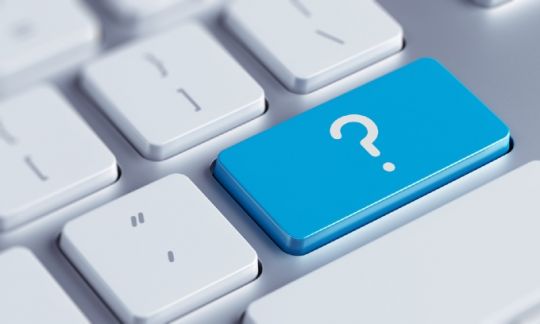Answers to 7 of the most Googled money questions

How much can I borrow?
It’s smart to have a rough idea of how much you may be able to borrow before applying for a home loan. Lenders each have their own formula for calculating your borrowing capacity or borrowing power. Broadly speaking, though, they all take into account these key factors:
- Your income. As well as your wage/salary, a lender will look at investment returns such as dividends or rent, as well as government benefits.
- Your existing debts. This doesn’t just include car or personal loans, it also includes any HELP debt. If you have a credit card, the lender will consider the credit limit, not the balance you owe, as you could potentially max out the card after being approved for a loan.
- Household living expenses. This can take into account regular costs such as groceries and fuel as well as childcare or school fees if you have kids.
- Number of dependents. This isn’t just about children. A non-working spouse or partner may also be considered a dependent.
You can use Canstar’s Home Loan Borrowing Calculator to get an idea of how much you may be able to borrow but keep in mind that these are just a guide and not a definite figure.
Let’s take a look at a hypothetical couple – Lee and Simon. Here are their details:
- Lee earns $95,000 annually before tax and Simon earns $70,000.
- The couple has two dependent children.
- The family’s annual expenses add up to $35,000.
- The pair have a car loan and the monthly repayments are $350.
- Lee and Simon each have a credit card with a maximum credit limit of $5,000 ($10,000 combined).
Canstar’s calculator shows that at an interest rate of 4.5% and a loan term of 30 years, Simon and Lee could borrow a maximum of $721,000.
There are a few things they could do if they were hoping to borrow more. If they closed one of the credit cards, for example, they could potentially borrow an extra $28,000. Alternatively, if they waited until the car loan was paid off their borrowing power would potentially increase to $771,000. Doing both would mean they could possibly borrow almost $80,000 more all up – $799,000.
What is inflation?
Inflation has been making headlines this year so it’s perhaps no surprise many Aussies want to get a better understanding of what it is. In simple terms, inflation refers to rising prices. Here in Australia, it is measured by the Consumer Price Index (CPI) which is compiled by the Australian Bureau of Statistics (ABS).
The CPI shows changes in the cost of a representative sample of items that make up typical household spending such as food, housing, transport, clothing and so on. It is currently published quarterly but from October 2022 the ABS will also start publishing a monthly CPI indicator.
The reason inflation has been in the news so often is that we have seen large increases in the CPI. In the March quarter annual inflation was 5.1% and in the June quarter it hit 6.1% – that was the highest rate of inflation in 21 years.
A modest level of inflation is generally a sign of a healthy, growing economy. That’s why the Reserve Bank sees 2%-3% inflation as the sweet spot for the Aussie economy.
Why does high inflation matter? Well, for starters, it reduces consumers’ purchasing power. The fact that wage growth has lagged inflation means our pay packets are able to buy less than before.
This can have a flow-on effect on our economy. If consumers spend less, businesses start to produce less, and this can lead to job losses – and potentially a recession.
How much tax do I pay?
In Australia we have a ‘progressive’ income tax system, meaning the more you earn, the more you pay. The first $18,200 of income is tax-free but from there, taxable income is divided into different brackets – each with a progressively higher tax rate as shown in the table below.
Resident tax rates 2022–23
← Mobile/tablet users, scroll sideways to view full table →
| Taxable income | Tax on this income |
|---|---|
| 0 – $18,200 | Nil |
| $18,201 – $45,000 | 19 cents for each $1 over $18,200 |
| $45,001 – $120,000 | $5,092 plus 32.5 cents for each $1 over $45,000 |
| $120,001 – $180,000 | $29,467 plus 37 cents for each $1 over $120,000 |
| $180,001 and over | $51,667 plus 45 cents for each $1 over $180,000 |
Source: Australian Taxation Office. The above rates do not include the Medicare levy of 2%.
Let’s take a look at how income tax is calculated using a hypothetical example. Sam earns $90,000 which means his marginal tax rate is 32.5% (excluding the Medicare levy). But that doesn’t mean Sam pays 32.5 cents on every dollar he earns.
On the first $18,200 he pays zero tax. On the amount between $18,200 and $45,000, Sam pays 19 cents for every dollar earned, which works out to be $5,092 (the Tax Office rounds to the nearest dollar). The remainder of Sam’s income ($45,000) is taxed at 32.5 cents, which comes to $14,625. So all up, Sam will pay tax of $19,717 ($5,092 plus $14,625). This doesn’t include the 2% Medicare levy.
An easier way to know how much tax you could pay is to head to Canstar’s Tax Hub and use the Pay and Tax calculator.
And remember, you may be able to reduce the amount of tax you pay by claiming deductions when you lodge your tax return.
What are NFTs?
NFT stands for non-fungible token, and it’s no surprise it ranked highly on Google searches because they were all the rage last year. In fact, they were so popular that Collins Dictionary declared NFT the ‘Word of the Year’ for 2021.
So what is an NFT? Let’s break it down. Non-fungible means a thing that is unique and can’t be replaced with something else. The token can be a video, an artwork – in fact pretty much any digital asset. Anyone can view the NFT but only one person can own it. This is because each NFT has a unique digital identifier recorded on the blockchain. That’s the same ledger system for recording ownership that cryptocurrencies use.
One of the most well-known NFTs is a digital artwork titled Everydays: The First 5,000 Days by Michael Winkelmann, known professionally as Beeple, which sold for $US63.3 million ($A103 million) in 2021.
Why pay so much for an NFT when anybody can download a copy of it? You’d have to ask MetaKovan (real name Vignesh Sundaresan), the founder of Metapurse, a crypto-based venture capital firm, who purchased the artwork.
What is more clear, is that the NFT Index, a digital asset index designed to track tokens’ performance within the NFT industry, has tanked since late 2021.
What time is Powerball drawn?
It seems like there might be a fair few Aussies out there hoping for a lottery win. Powerball is drawn on Thursdays at 8:30pm AEST (9:30pm AEDT).
If you’re not familiar with how Powerball works, seven numbers (from 1-35) are drawn from one barrel, and one Powerball number (from 1-20) is drawn from a second barrel. Sounds easy right? Not really. The odds of winning the top prize – which means getting all seven numbers plus the Powerball number in a single ‘game’ – are a staggering one in 135 million.
How much super should I have?
Given the odds of winning Powerball are one in 135 million, most of us will have to fund our own retirement which is why this question is so important.
To work out how much super you should have now, it’s important to know how much money you’ll need to retire in the future. According to the latest (June 2022) Retirement Living Standard from super industry body ASFA, a single person needs an annual income of $47,383 to live ‘comfortably’ in retirement. This figure is $66,725 for a couple. In order to achieve this level of annual income, ASFA says a single person needs to accumulate $545,000 in super by age 67, while a couple needs a total of $640,000.
Super Consumers Australia (SCA) figures suggest that you may not need to save quite that much. SCA estimates that a single person who wants to spend $44,000 a year in retirement (considered a medium level of spending) will need $301,000 and a couple with a medium level of spending ($64,000 a year) will need $402,000. That’s chiefly because SCA takes into account the availability of the Age Pension, which can be an additional source of retirement income.
So, how is your super shaping up? The table below shows how much ASFA estimates you need in super at various ages to be on track to reach its target amount for a comfortable retirement. If you’re aged 30 for example, you should ideally have a current super balance of $54,000.
How much you should have in super today for a comfortable retirement?
← Mobile/tablet users, scroll sideways to view full table →
| Age | 25 | 30 | 35 | 40 | 45 | 50 | 55 | 60 |
|---|---|---|---|---|---|---|---|---|
| Current super balance | $17,000 | $54,000 | $93,000 | $143,000 | $195,000 | $257,000 | $330,000 | $415,000 |
Source: ASFA Super Detective calculator.
If you’re concerned you aren’t on track, consider making extra contributions to your super – even if it’s just $20 a week. And give your super fund a health check to make sure you aren’t paying too much in fees and that the fund has been performing well.
How do you buy bitcoin?
Bitcoin has had a bumpy ride having fallen 49.67% over the past 12 months from about $56,300 to $28,330. That’s after hitting more than $91,000 in November! If the extreme volatility hasn’t scared you off and you’re thinking about jumping in here’s a look at how you can do it.
Getting started in bitcoin typically involves a four-step process:
- Choose a cryptocurrency trading platform – look for a reputable platform and compare fees. CoinSpot for instance has trading fees starting at 0.1% though fees can also be charged depending on how you transfer funds to your account.
- Open an account – you’ll likely need to provide personal ID including a photo of yourself.
- Deposit cash into your account – this can usually be done through an online transfer from your bank account or by using a debit card or via PayPal. It may also be possible to make a deposit with a credit card but this can mean paying higher platform fees and cash advance interest rates on the card. You won’t need much cash to get started, in some cases, less than $50 will open an account.
- Start trading – head to the buy/sell section of the platform to begin trading the crypto of your choice.
It’s worth noting you don’t have to buy a whole Bitcoin. You can buy, say, $100 worth of Bitcoin, which still lets you ride any crypto upswings (as well as the downturns).
Cover image source: xtock/Shutterstock.com.
This article was reviewed by our Editorial Campaigns Manager Maria Bekiaris before it was updated, as part of our fact-checking process.






